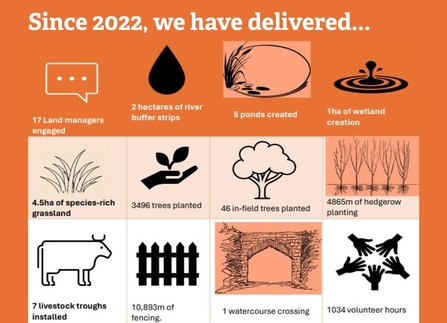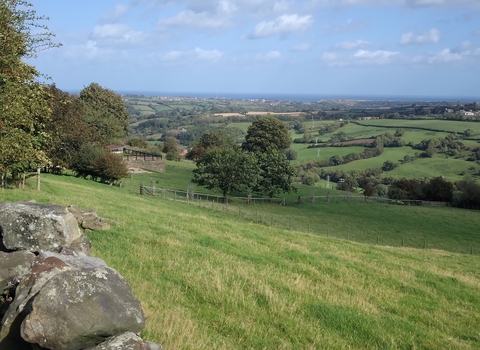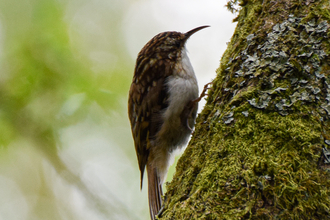Where is the River Esk?
The River Esk flows for 28 miles through the North York Moors National Park, rising in Westerdale before reaching Whitby, where it enters the North Sea. Along its course, the river and its tributaries pass through a variety of landscapes, including dramatic moorland, ancient woodland, and gently rolling farmland, before reaching the Esk Estuary and the coast. The watercourse supports a rich diversity of wildlife, from Atlantic salmon and sea trout, to the critically endangered freshwater pearl mussel.
The BEACH Esk project focuses on the Lower Esk Catchment, its tributaries around Whitby, the Esk Estuary, and the surrounding coastline.
BEACH ESK Finn Varney video (https://www.youtube.com/watch?v=c4vVek6HI_w)
BEACH Esk - an ambitious source-to-sea landscape recovery project, which seeks to improve water quality and enrich biodiversity. This story is told in the voice of the River Esk. (c) Finn Varney
Our key aims
A landscape scale project, funded by the Environment Agency, and focussed on improving water quality and habitat in the Lower Esk Catchment and coastal area.
The project’s three elements are:
- Estuarine Enhancement: Led by Groundwork Northeast and Cumbria, this element explores opportunities to create additional salt marsh habitat within the Esk estuary, while retrofitting a range of intertidal features such as living seawalls, artificial rock pools (e.g., vertipools), and fish refuges. These habitats provide vital homes for marine life, including crabs, periwinkles, and seaweeds.
- Catchment diffuse pollution: Led by Yorkshire Wildlife Trust, this element focuses on researching and identifying pollution sources and pathways within tributaries. It involves engaging with stakeholders and partners, and prioritising key locations for the delivery of a targeted capital works programme.
- Stakeholder engagement: Also led by Yorkshire Wildlife Trust, this element aims to improve practices within the estuary by working with businesses, the local community, and visitors. It includes developing best practice codes of conduct to ensure a consistent approach and to address known issues within Whitby harbour.
How can you help?
Members of the Public
Actions by everyone have an effect on our watercourses. What we do at home and by the water can directly impact rivers, the harbour and the sea. By making small changes in how we dispose of waste, wash our clothes or enjoy activities like crabbing, we can all help keep Whitby’s waters cleaner and healthier for wildlife and people.
Fats, Oils & Greases (FOGs)
Never pour fats, oils or grease down the sink. They can cause blockages, create “fatbergs,” and pollute our rivers and seas. This harms wildlife and damages habitats. See our infographic for the correct way to dispose of FOGs.
Only Flush the 3Ps
Remember: only Pee, Poo and Paper should go down the toilet. All other items belong in the bin to prevent blockages and pollution.
Microfibres
Washing clothes releases tiny fibres into our drains, which can end up in the marine food chain. You can help by:
Buying fewer clothes and keeping them longer
Washing clothes less often
Using a microfibre catcher in your washing machine
Check our infographic for fabrics that release the most microfibres.
Responsible Crab Lining
Please follow best practice when crabbing to keep Whitby's harbour safe for wildlife and people. See our video below for full guidance.
Boat Owners
Whitby’s harbour and estuary are under threat from everyday pollution, and local boat owners play a key role in protecting them. Small discharges from bilge water, refuelling, engine leaks and antifouling paints may seem minor, but together they cause serious harm. Just one litre of oil can pollute a million litres of water, endangering fish, birds, plants and the unique wildlife of the Esk Estuary and wider marine environment.
By taking simple steps, such as using safer antifoulants, properly storing and disposing of fuel and oil, containing spills responsibly, and preventing waste, such as bilge water, from reaching drains or the estuary, boat owners can make a real difference.
With the support of Whitby’s boating community, the BEACH Esk project is working to keep the estuary clean, healthy and thriving for people, wildlife and the future of the town.
Land Owners & Managers
If you own or manage land adjacent in the Lower Esk Catchment and would like to be involved in the project, contact Christopher Watt at chris.watt@ywt.org.uk for more information.
Our Work
We have carried out river walkover surveys across all watercourses in the catchment, covering more than 100 km. These surveys helped us build a detailed picture of the river network, highlighting issues affecting water quality and identifying opportunities for restoration.
The most common problems recorded were bankside erosion, livestock trampling riverbanks (known as poaching), and runoff from fields and farmyards.
Working closely with landowners, Yorkshire Wildlife Trust has been taking action to tackle these challenges, for example, installing fencing to keep livestock out of the river and creating or enhancing buffer strips along the banks.
See the infographic below for a summary of our achievements since 2022.

Partners/Funders
Yorkshire Wildlife Trust has been working on the BEACH Esk project in partnership with Groundworks NE & Cumbria and the Environment Agency. Funding has been received from Environment Agency and through the Farming in Protected Landscapes (FiPL) programme which is administered through the North York Moors National Park Authority.








